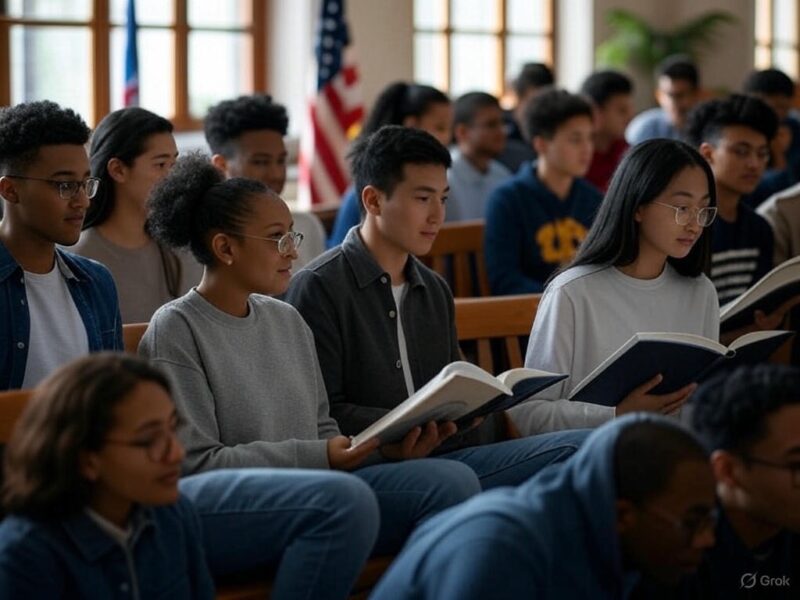Studying in the United States remains a dream for millions of students worldwide. With its globally respected universities, cutting-edge research facilities, and dynamic campus environments, the U.S. continues to attract top talent from around the world.
However, the high cost of education in the United States can be a barrier for many. Tuition fees for undergraduate programs can exceed \$50,000 per year, not including housing, food, health insurance, and personal expenses.
This is where scholarships come into play. Scholarships are not just financial assistance—they represent opportunity, access, and achievement. Whether you’re a high school student aiming for an Ivy League university or an international student looking for a chance to study abroad, American university scholarships can play a decisive role in your academic and career trajectory.
In this comprehensive guide, we’ll explore the full spectrum of American university scholarships, from types and eligibility to prestigious programs and strategic tips for applicants.
Types of Scholarships Offered by American Universities
There are numerous types of scholarships available in the United States, offered by universities, government agencies, private organizations, non-profits, and alumni associations. Understanding these categories helps students tailor their applications effectively.
1. Merit-Based Scholarships
These scholarships are awarded to students based on academic, athletic, artistic, or extracurricular achievements. Universities often offer these scholarships to attract top-tier students. Selection criteria can include GPA, SAT/ACT scores, leadership roles, community involvement, and specific talents.
Examples:
- Presidential Scholarship at Boston University
- Dean’s Scholarships at NYU and University of Southern California
2. Need-Based Scholarships
These scholarships are designed to support students who demonstrate financial need. In the U.S., the Free Application for Federal Student Aid (FAFSA) is typically used to assess eligibility, but private and international students may need to submit the CSS Profile or university-specific documentation.
Examples:
- Harvard University Financial Aid Initiative (HUFAI)
- Stanford’s No-Loan Financial Aid Policy
3. Athletic Scholarships
Regulated by the NCAA, NAIA, and NJCAA, athletic scholarships are offered to students who excel in sports such as basketball, football, soccer, swimming, and track & field. These scholarships may cover full or partial tuition and are highly competitive.
Examples:
- Division I full-ride scholarships
- Partial athletic aid at Division II institutions
4. Talent-Based Scholarships
These scholarships are for students with exceptional ability in areas such as music, dance, visual arts, theater, writing, or other creative fields. Applicants often need to submit a portfolio or audition.
Examples:
- Theater and Art Scholarships at Juilliard or NYU Tisch
- Creative Writing Scholarships at Kenyon College
5. Diversity Scholarships
Aimed at promoting inclusivity, these scholarships support students from underrepresented racial, ethnic, gender, or socioeconomic backgrounds. They are often part of broader diversity and inclusion efforts at universities.
Examples:
- QuestBridge National College Match
- POSSE Foundation Scholarships
6. Field-Specific Scholarships
Many scholarships are designated for students in certain disciplines, particularly in STEM (science, technology, engineering, math), business, education, and public service.
Examples:
- SMART Scholarship for STEM majors
- TEACH Grant for aspiring educators
7. Scholarships for International Students
International students are eligible for both need-based and merit-based scholarships at many U.S. institutions. However, these scholarships are often more competitive due to limited funding and higher demand.
Examples:
- AU Emerging Global Leader Scholarship at American University
- International Merit Scholarships at Clark University and Berea College
Top American Universities Offering Generous Scholarships
The following is a closer look at universities that are well-known for their generous and accessible scholarship programs:
1. Harvard University
- Offers need-based aid only.
- Families earning under \$85,000 pay nothing for tuition, room, or board.
- Over 55% of students receive financial aid.
- Fully need-blind admissions for both domestic and international students.
2. Princeton University
- Pioneered the no-loan financial aid policy.
- Meets 100% of demonstrated need.
- Median grant for the Class of 2025 was \$62,200.
3. Stanford University
- Need-blind for U.S. students, need-aware for international applicants.
- Families earning less than \$100,000 receive full tuition assistance.
4. Massachusetts Institute of Technology (MIT)
- Offers need-based aid only.
- 58% of undergraduates receive financial aid.
- Average need-based scholarship: \$53,997 per student.
5. Amherst College
- One of few colleges that is need-blind for international applicants.
- Meets full demonstrated need for all students.
- Uses grants instead of loans.
6. University of Southern California (USC)
- Offers a wide variety of merit scholarships.
- Trustee Scholarship offers full tuition.
- Presidential Scholarship offers half tuition.
7. Duke University
- Offers both need-based and merit-based aid.
- Robertson Scholars Leadership Program provides full tuition and living expenses.
8. University of Virginia
- Offers full-ride scholarships through the Jefferson Scholars Program.
- Strong need-based aid for in-state students.
9. University of North Carolina at Chapel Hill
- Morehead-Cain Scholarship: Covers full cost of attendance, plus summer enrichment.
10. University of Alabama
- Known for awarding automatic merit scholarships to out-of-state and international students with strong GPAs and test scores.
Prominent National Scholarship Programs
In addition to institutional aid, many organizations provide national-level scholarships to help students afford their university education.
1. Gates Scholarship
- Fully-funded scholarship for high-achieving, low-income minority students.
- Covers full cost of attendance including tuition, fees, room, board, and books.
- Over 300 winners annually.
2. Jack Kent Cooke Foundation
- Scholarships for high-performing students with financial need.
- Up to \$55,000 per year for undergraduate studies.
3. QuestBridge National College Match
- Matches high-achieving, low-income students with full-ride scholarships at top colleges.
- Partner colleges include Yale, MIT, Stanford, and Princeton.
4. Coca-Cola Scholars Program
- Awards \$20,000 to 150 high school seniors annually.
- Selection based on leadership, academics, and community service.
5. Dell Scholars Program
- Offers \$20,000, a laptop, and support services to low-income students.
6. Horatio Alger Scholarship
- For students who have faced and overcome significant obstacles.
- Awards up to \$25,000.
7. National Merit Scholarship Program
- Based on PSAT scores.
- Offers scholarships from corporate sponsors, universities, and the National Merit Corporation.
Scholarships for International Students in Detail
While the U.S. offers many opportunities for international students, finding funding can be more challenging. Below are some key scholarship programs specifically targeting non-U.S. citizens:
1. AU Emerging Global Leader Scholarship
- Offered by American University in Washington, D.C.
- Covers full tuition, room, and board for one international student annually.
- For students committed to positive civic and social change.
2. Fulbright Foreign Student Program
- Sponsored by the U.S. government.
- Funds graduate study or research for international students.
- Includes tuition, living stipend, and travel costs.
3. Clark University Global Scholars Program
- Up to \$25,000 per year in aid.
- Additional \$5,000 if the student completes an internship.
4. Berea College International Scholarships
- Every admitted student receives 100% financial aid.
- Must contribute \$1,000 annually through work-study.
5. Illinois Wesleyan University International Merit Awards
- Awards range from \$16,000 to \$30,000 per year.
- Renewable for four years.
6. Stanford Knight-Hennessy Scholars Program
- Graduate scholarship program for international students.
- Covers tuition, stipend, and academic enrichment.
How to Search for Scholarships
The process of identifying scholarships requires diligence and organization. Here are top methods to conduct an effective scholarship search:
1. Use Scholarship Databases
Some of the most popular and reliable scholarship search engines include:
- Fastweb
- Scholarships.com
- College Board BigFuture
- Cappex
- Niche
- ScholarSnapp
- IEFA.org (International Education Financial Aid)
2. Check University Websites
Most universities list scholarships on their admissions and financial aid pages. Always read the eligibility, application process, and deadlines carefully.
3. Contact High School Counselors and University Advisers
School counselors often have local scholarship resources and insider knowledge about regional opportunities.
4. Explore Local and Community Opportunities
Local businesses, community groups, and religious organizations often offer smaller, less competitive scholarships.
5. Use Social Media and Forums
Platforms like Reddit (e.g., r/scholarships), LinkedIn, and Facebook groups often post up-to-date information on available opportunities.
How to Apply for Scholarships Successfully
Getting a scholarship isn’t just about meeting requirements—it’s about presenting your best self. Follow this blueprint for a successful application:
1. Start Early
Most scholarships have deadlines between November and March. Starting early ensures you won’t miss deadlines and can put time into writing compelling essays.
2. Organize Documents
Prepare the following ahead of time:
- Transcripts
- Standardized test scores
- Letters of recommendation
- Personal statement or essay
- Financial documents (FAFSA/CSS Profile)
- Resume of activities
3. Write a Strong Essay
Your essay is your voice in the application. Make sure to:
- Tell a personal, authentic story.
- Highlight your values, goals, and character.
- Explain how the scholarship will help you make an impact.
4. Request Strong Recommendations
Ask teachers, mentors, or employers who know you well and can write specifically about your strengths and contributions.
5. Follow Instructions Precisely
Submit everything required, including optional materials if they strengthen your case. Carefully proofread all materials.
Scholarship Myths Debunked
Let’s bust some common myths that prevent students from applying for scholarships:
Myth 1: Scholarships are only for perfect students.
Reality: Many scholarships value leadership, resilience, creativity, or financial need over a perfect GPA.
Myth 2: Only U.S. citizens are eligible.
Reality: Many schools and organizations fund international students as well, especially at private institutions.
Myth 3: Applying takes too much time.
Reality: While competitive, one strong application can be reused and adapted for multiple scholarships.
Myth 4: Small scholarships aren’t worth it.
Reality: Even \$500 or \$1,000 can pay for books or housing. Small awards also add up over time.
Here’s a dedicated FAQs section related to American University Scholarships:
Frequently Asked Questions (FAQs) About American University Scholarships
What types of scholarships are available at American universities?
American universities offer several types of scholarships, including merit-based, need-based, athletic, talent-based, diversity, field-specific, and scholarships for international students. These may cover full or partial tuition, housing, or other expenses.
Can international students apply for scholarships in the U.S.?
Yes. Many U.S. universities offer scholarships specifically for international students. Some institutions, like Amherst College and American University, even offer full scholarships or meet 100% of demonstrated financial need for international students.
Are scholarships available for graduate students as well?
Yes. Graduate students can apply for scholarships, fellowships, assistantships, and research grants. Prestigious programs include the Fulbright Foreign Student Program, Knight-Hennessy Scholars, and university-specific fellowships.
How do I apply for scholarships at U.S. universities?
Each scholarship has its own application process. Generally, you’ll need to submit an application form, academic transcripts, recommendation letters, standardized test scores, a personal essay, and financial documents like the FAFSA or CSS Profile (for need-based aid).
When should I start applying for scholarships?
Start at least 12–18 months before your intended start date. Scholarship deadlines often fall between November and March for students starting in the fall semester.
What is the FAFSA and do international students need it?
The Free Application for Federal Student Aid (FAFSA) is used by U.S. citizens and eligible non-citizens to apply for federal financial aid. International students typically do not use the FAFSA and instead submit the CSS Profile or university-specific forms.
Is it possible to get a full scholarship?
Yes. Full scholarships cover tuition, fees, room, and board. Programs such as QuestBridge, Gates Scholarship, Morehead-Cain, and institutional awards from Harvard or Princeton provide full financial support.
What GPA do I need for a scholarship?
GPA requirements vary. Merit-based scholarships often require a GPA of 3.5 or higher, but some programs consider leadership, extracurriculars, and personal stories alongside academics.
Do I have to repay scholarships?
No. Scholarships are not loans and do not need to be repaid—unless you violate the terms, such as withdrawing from school or failing to maintain academic standing.
Can I combine multiple scholarships?
In many cases, yes. However, some scholarships may have stacking limits or reduce the amount if your total aid exceeds the cost of attendance. Always check the scholarship policy.
Are there scholarships specifically for minorities or underrepresented groups?
Yes. Many scholarships promote diversity and inclusion by targeting underrepresented racial, ethnic, gender, or socioeconomic groups. Examples include the Gates Scholarship and POSSE Foundation.
Do I need to be admitted before applying for scholarships?
Sometimes. Many scholarships require that you first apply and be admitted to the university. However, some national scholarships, like Coca-Cola Scholars, can be applied for independently.
Can I lose my scholarship once awarded?
Yes, if you fail to meet academic requirements, violate campus policies, or drop below full-time enrollment. Most scholarships have minimum GPA requirements to retain funding.
Where can I find scholarships that fit me?
Use reputable search engines like Fastweb, Scholarships.com, Cappex, and College Board BigFuture. Also, explore your target universities’ financial aid pages and consult your school counselor.
Conclusion
Scholarships are more than just a means to pay for college—they are a gateway to opportunity. They open doors to top-tier education, connect students to influential networks, and empower individuals from every background to pursue their passions. The path to winning a scholarship may be competitive, but it’s absolutely achievable with preparation, authenticity, and determination.
Whether you’re a student from a rural town in the U.S., an international student in Asia, or a first-generation college applicant, there’s a scholarship out there that aligns with your story and ambition. By understanding the types of scholarships available, knowing where to search, and submitting compelling applications, you can position yourself for both academic success and financial freedom.
Take the time to research, prepare, and apply widely. Your effort today can unlock a future filled with discovery, growth, and impact.






